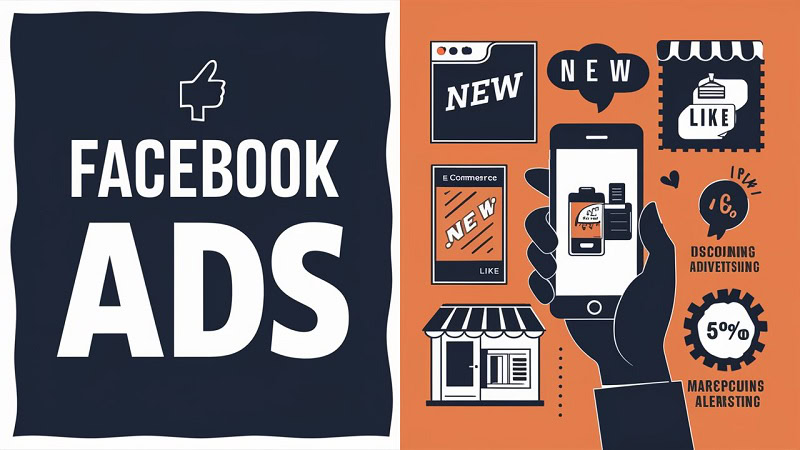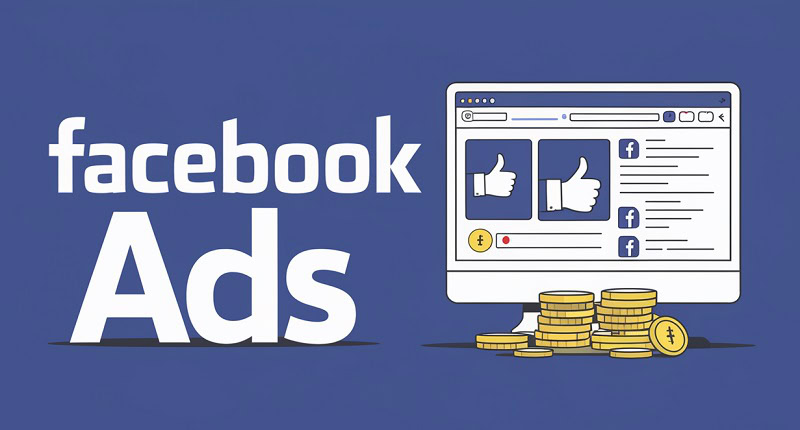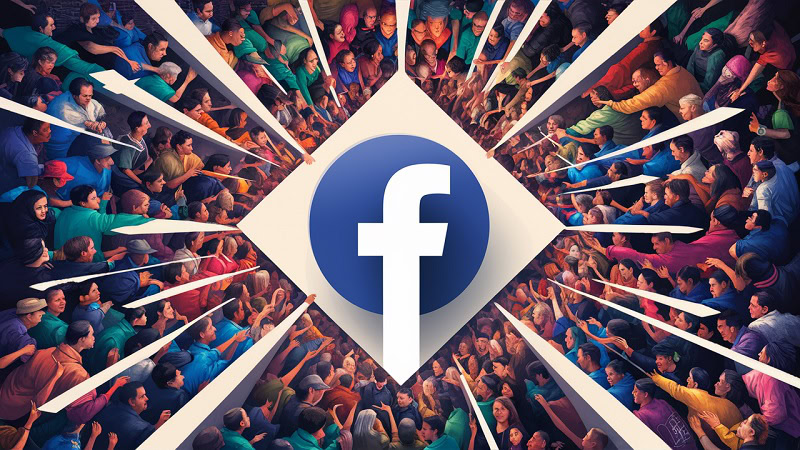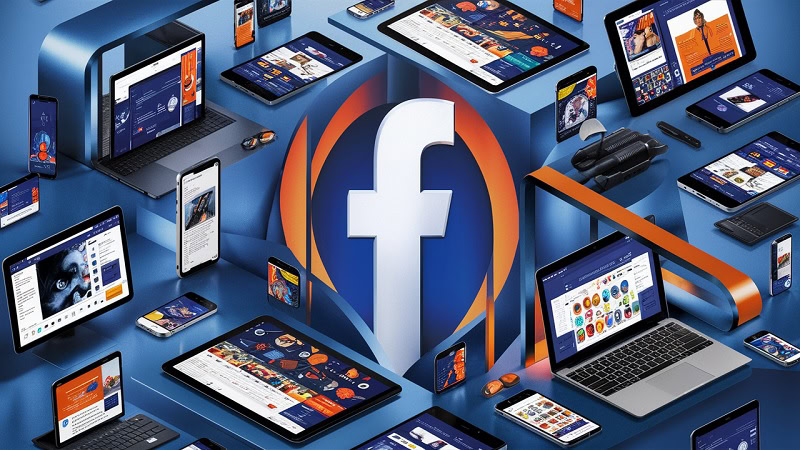
About author: Paulina Poliszewska leverages her expertise in media buying to optimise paid campaigns, ensuring maximum ROI and successful outcomes for DTC brands.
Running a wildly successful Twitter advertising campaign isn’t easy.
You need to master several different elements to generate positive results – everything from setting up your Twitter ads, to optimising your tactics, to accurately tracking performance.
(Oh, and that’s alongside managing your business.)

Boost E-Commerce ROI: Download Our Free CPA & ROAS Calculator
It’s safe to say that your plate is pretty full.
Well, we can lend a helping hand.
We’ve produced the complete step-by-step guide to Twitter advertising, covering every aspect of launching a profitable campaign.
Let’s get this show on the road, shall we?
As a specialist Twitter ads agency we can help you with your campaigns just get in touch for a free consultation.
What are Twitter ads, exactly?
Let’s start with the basics.
Twitter ads appear in the Twitter feed. They come in a variety of different formats and can be targeted towards specific audiences.
You can also tailor your ads to focus on certain business objectives, making the Twitter platform a versatile one for e-commerce advertisers.
Twitter is a unique social media environment, with a big focus on user interactions and conversations.
As a result, Twitter ads also present a unique opportunity for advertisers because they encourage brands to get involved in these organic conversations and boost engagement.
Are Twitter ads right for my business?
Twitter presents a strong commercial opportunity for many businesses.
Firstly, the platform allows you access to a significant number of active users – around 200 million individuals log in to Twitter every month.
Although this doesn’t compare to the size of giants like Facebook (which reports around 2.89 billion monthly users) it’s still a sizable audience for you to capitalize on.
Plus, when it comes to paid social, size isn’t always everything.
Twitter offers advertisers a range of effective ad formats, alongside sophisticated targeting and engaged users. Its focus on organic user interactions also creates some exciting opportunities to connect with prospects.
The big benefits of Twitter advertising
Let’s take a look at three of the most compelling benefits of Twitter advertising.
You can capitalise on real-time conversations
Many individuals use Twitter to take part in organic conversations. Brands can use these conversations to enhance their Twitter ads campaign performance.
The platform is all about user interaction. There are millions of Tweets posted every single day, each with replies and re-Tweets.
Sounds like the perfect opportunity for some brand advertising, right?
Because these conversations are constantly ongoing, brands can directly communicate with audiences, tailor their advertising around trending topics, and use keyword data to refine their targeting.
When executed correctly, Twitter advertising can feel more authentic than other forms of paid social marketing.
This builds trust and credibility, which can be a deciding factor when it comes to driving conversions.
You can utilise unique ad formats
Twitter ad placements are highly visible, and that’s partly due to the simple design of the platform.
Ads are served in-feed and alongside all of the usual organic content. That’s it.
No jazzy widgets, pop-ups or sidebars. Just your advertising, displayed exactly where Twitter users are scrolling, with zero distractions.

Twitter also offers diverse formats that can deliver superb performance. Although all placements sit in-feed, that doesn’t mean there isn’t room to get creative.
Advertisers can deliver impactful Takeover ads, run pre-roll Amplify ads around popular content, and utilise Carousel ads to showcase product collections.
The Twitter design may be simple, but there are plenty of opportunities to innovate and generate top-notch results.
You only pay when Twitter performs
A major benefit of Twitter is also the cost-effective ‘billable actions’ pricing model.
This means that advertisers only pay when their Twitter ads perform.
This is excellent for cost-efficiency because you’re only charged when a specific action occurs on the platform.
For example, if you’re focused on driving website traffic and specify a ‘website clicks’ objective, you’ll only pay when a user clicks a link to your site.
For businesses looking to maximise website conversions and squeeze the best results from their budget, this is a dreamy buying model.

How much will Twitter advertising cost?
So, Twitter advertising is sounding pretty promising.
But we know the next question. How much do Twitter ads cost?
The short answer is that it all depends on your budget. You’ll define the amount you’re willing to pay for a Twitter ads campaign, and that will determine what you’re charged.
The longer (and slightly more informative) answer is that the cost of a Twitter campaign revolves around a few different variables.
Firstly, you’ll need to define the billable action that your Twitter ad campaign will aim to achieve. Think of this as your campaign objective. It could be link clicks, app installs, video views, or various other actions.
The cost of achieving these billable actions then depends on an auction system.
Advertisers bid on available ad space to deliver against their campaign objectives and reach their target audience. The advertiser with the largest bid generally tends to win the auction and serve their ad. Makes sense.
However, your bid amount isn’t the only factor that contributes to campaign costs. The following factors can also influence the price of serving an ad:
- How engaging and relevant your ad is
- The size of your target audience
- The number of other advertisers competing for that audience
It’s important to focus on the quality of your advertising and your audience targeting, as well as your bidding strategy. Chasing highly competitive audiences will likely increase your costs, but refining and improving your ads can also help to reduce them.
If you’re looking for more information on Twitter costs, you can check out the Twitter Ads Help Centre.
What are the different types of Twitter ads?
Twitter offers advertisers a range of different ad placements, each with unique features. Let’s run through the formats available.
Image Ads
Image ads feature a single image beneath standard ad copy.
These placements are simple and easy to create, so they’re great for quick turnaround Twitter ad campaigns or reactive messaging (e.g. responding to a trending topic). They can also include features like polls alongside a Call To Action.
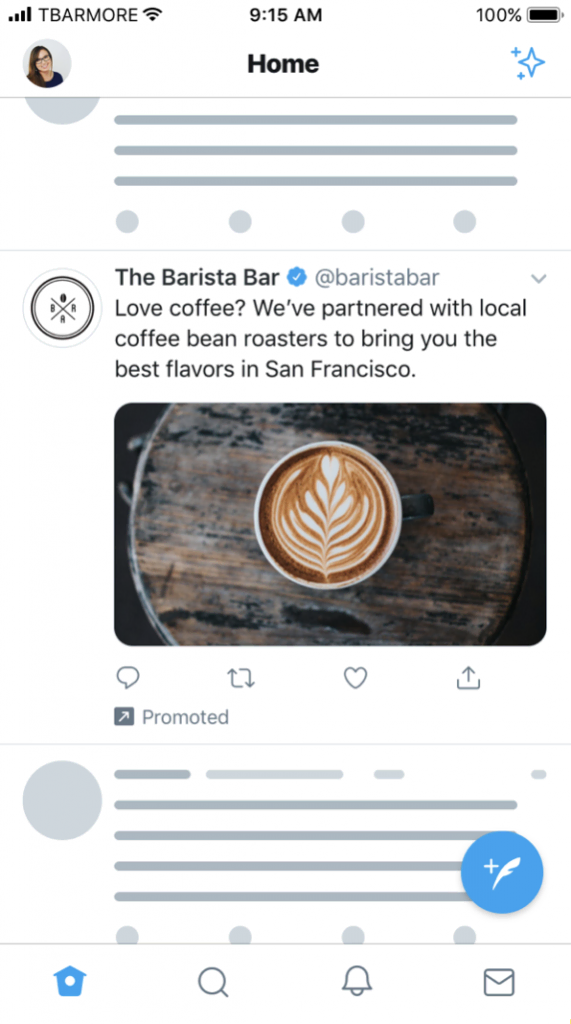
Video Ads
Video ads enable brands to run video assets up to 10 minutes long.
However, Twitter recommends that video ads run for around 15 seconds to drive maximum engagement – any assets under 60 seconds will automatically loop.
Brands can also promote live video streams, so if you’re planning a webinar or product launch, this can be a smart way to increase your audience exposure.

Carousel Ads
Carousel ads allow you to run between two and six assets in a single format.
This can be an excellent way to advertise multiple services or showcase a new product range in a highly engaging way.
These Carousel assets can also be static images or videos, which is convenient if you have a range of different formats to utilise.

Moment Ads
Feeling restricted by the 280 character limit of a single Tweet?
Moment ads allow you to curate a selection of Tweets and house them under a single placement.
You might want to summarise the outputs from a webinar, or harness the power of UGC and show off some glowing customer testimonials. It’s also a smart way to resurface old content.
⚡️ “Gusto celebrates small businesses with the #ExtraMileAward 🎉”https://t.co/NKW2R2V0JB
— Gusto (@GustoHQ) June 13, 2017
Text Ads
If you have the right message, sometimes you can’t beat a good old fashioned Text ad.
Although images and videos can help to capture attention and boost engagement, if you’ve seen an organic Tweet generate some momentum among your followers, it can be worth promoting the content to increase your reach.
Follower Ads
If you’re hoping to increase the popularity of your Twitter account and grow your follower numbers, look no further.
Follower Ads enable you to directly promote your brand profile on Twitter, accompanied by the usual 280 characters of text.
Since these ads also contain a ‘Follow’ CTA they can be an efficient way to connect with your target audience and encourage action.
Successfully boosting the visibility of your business account can help to increase future engagement and support organic content efforts.

Amplify Ads
Amplify ads are a great way to position your video assets alongside content that’s resonating with your target audience.
These ads appear before longer-form video content in the Twitter feed, functioning like a skippable pre-roll advert.
They can run for a maximum of 2 minutes and 20 seconds, but the 15-second recommendation still applies here. Video consumption is constantly growing on Twitter, and Amplify ads are an excellent opportunity to capitalise on popular organic content.

Takeover Ads
Keen to make a memorable impact on your Twitter audience? Takeover ads are the answer.
This eye-catching ad format sits at the very top of the user timeline when the app is opened, delivering strong visibility and encouraging immediate engagement.
Takeovers can be run as both static images and videos, so you can select the perfect asset to capture the attention of your prospects. This is one of the most impactful formats available on Twitter, so it’s vital to deliver a compelling message.

Need some more information on these Twitter ad formats? You can find detailed specs for each of these placements here.
How to use Promoted Tweets
Sometimes you’ll want to promote a message on Twitter, but only to specific users within your target audience.
This could be a product update that might only appeal to a certain section of your audience, or a sales message that you don’t necessarily want to broadcast on your profile page.
If you’re looking to deliver a more targeted message, a Promoted Tweet can get the job done.
Promoted Tweets function in a similar way to organic Tweets, but they only appear to targeted users. They won’t be shared on the timeline, and they won’t be displayed to your followers.
Promoted Tweets can receive Tweet engagements from targeted users, so you can still encourage interactions (e.g. likes, replies) from prospects.
You can create Promoted Tweets like any other placement within your Ads account, so keep this in mind if you’re looking to deliver some tactical messages.

Crafting your Target Audiences
There are three main methods of targeting on the Twitter platform.
Demographic Targeting
You can utilise demographic targeting to reach prospects based on their location, language, device, age, and gender.
Audience Targeting
Audience targeting allows you to refine your approach further, and Twitter has some interesting options in this space.
For example, you can reach users based on Conversation Targeting. Advertisers can focus on targeting specific conversation themes across 25+ categories and 10,000+ topics.
This can be a highly effective way for brands to engage with audiences if their messaging is relevant.
You can also broaden this approach with Keyword Targeting, reaching (or excluding) users who have searched, Tweeted, or engaged with specific keywords.
Beyond this, you’ll find more standard targeting options (e.g. Interest targeting) and also smart tactics like Follower Lookalike targeting. Some of these tactics are fairly unique and maximise the potential of the Twitter platform for advertisers.
Your audiences
You can also focus on reaching known audiences with tactics like Follower Targeting and Custom Audiences.
Follower Targeting can be a great way to drive action from existing users who have already shown interest in your brand.
In terms of Custom Audiences, Twitter offers three different types:
- Lists – target existing customers by uploading their email addresses, or specific influencers by uploading a list of Twitter names
- Website Activity – target recent website visitors by gathering data from a Twitter pixel
- App Activity – target users who have taken specific actions on your app by gathering data from mobile app conversion tracking
Custom Audiences can be an extremely powerful tool in your marketing arsenal because they allow you to reach hot prospects.
It’s worth noting here that iOS updates have caused some significant disruption to pixel tracking, which has a direct impact on Custom Audiences. However, Twitter has released some guidance on tackling these challenges, which you can read here.
Setting up and running Twitter ads
1. Create a Twitter Account
First things first, you’ll need to set up a Twitter profile for your business.
Just follow these steps to get started, and you’ll soon be the proud owner of a Twitter Ads account. This allows you to run ad campaigns on the platform, and also provides you with access to the Twitter Ads Manager where you can monitor performance.
2. Choose your objective
You’ll then be prompted to select your campaign objective. This is a hugely important step in the process because your objective will determine the actions that you pay for!
There are three broad objectives to choose from, and different metrics fall under each of these categories.
For instance, if you want to focus on Awareness as your main objective, you’ll be paying on a CPM model for every 1,000 impressions delivered.
But if you’re more interested in Consideration, you might want to prioritise website clicks as your primary objective. It all depends on your ideal outcomes.
It’s worth reviewing the full range of objectives available on the platform so that you can understand which options align with your business goals.
3. Set up ad groups and bidding
Once you’ve selected your objective, you’ll be able to name your Twitter ad campaign, confirm your budget, and then set up your ad groups.
You can run different ad groups with different targeting tactics, creative assets and budgets. As you gather insights over time, you can experiment with new approaches and additional ad groups.
After confirming your ad group, it’s time to set your bid type. Automatic bidding instructs Twitter to achieve the best results at the lowest price, based on your budget.
If you’re new to Twitter advertising this can be a handy option, because it allows the algorithm to optimise your bids. Once you have a better understanding of your bidding costs, you can take back control if you prefer a more manual approach.
4. Build your target audience
Time to build your target audience. Choose your preferred targeting options (Demographic, Audience, etc) or upload your chosen list if you’re running a Custom Audience.
The platform will provide you with an estimated audience size that changes as you tweak the segments.
5. Choose your ad placement
At this point, you can tweak where your Twitter ads will be displayed. You can toggle User Timelines, Profiles and Search Results.
Unless you have a specific reason to exclude any of these environments, it’s a sensible idea to maximise visibility by selecting all of them.
It’s as simple as that! You’re ready to hit the Launch Campaign button and send your campaign into cyberspace. Exciting stuff.
Running a successful Twitter campaign
Now that you know how to launch a campaign, let’s look at some best practices to ensure that you crush your Twitter targets.
Tailor ads to the platform
If your ads feel native to the Twitter platform, they’re less likely to seem intrusive and sales-y.
Use a conversational tone in your ads to encourage engagement with your audience and blend seamlessly into the Twitter feed.
Don’t shy away from using emojis and hashtags either. They’ll make your advertising look more natural.
If possible, keep your messaging relevant to current trends too. Many brands achieve impressive levels of engagement by keeping up with current events and reacting to industry news.
Fuel paid content with organic content
It’s important to keep your profile active with organic content. Not only does this engage your followers, but it also provides you with valuable insights for paid campaigns.
If you’re consistently seeing certain themes resonate with your followers, you can take these learnings and apply them to your paid ads.
Testing messages with organic posts is a great way to gather insights without spending a penny. Alternatively, if an organic Tweet is gaining momentum, you can promote the content to increase reach.
Keep it short and sweet
Many of your prospects will be hurtling through the Twitter feed at high speeds, consuming bite-sized content along the way.
A chunky block of ad text isn’t likely to capture attention. But punchy ad copy will.
Keep your copy focused on the most compelling points.
This could be a strong product feature, a statistic, or a direction towards a CTA. Whatever your core message, deliver it quickly to ensure that users absorb the information.

How to make effective optimisations
Making impactful optimisations is key to delivering superior results.
Firstly, it’s crucial to stay focused on your campaign objective.
To make the correct optimisations, you need to monitor the right metrics. If your campaign is focused on website traffic, then assess which tactics are driving the highest volume of clicks at the most efficient cost.
Certain audiences could be driving your costs up due to competitor activity, or a specific creative could be smashing your traffic goals.
Keep a close eye on performance to identify these opportunities for optimisation.
You can also optimise the quality of your ads to give yourself the best chance of success and even lower your bidding costs. Take learnings from the most successful ads and apply them to future assets.
The importance of testing and learning
One of the best ways to improve Twitter performance over time is to run continuous tests.
Keep your ads fresh by trialling new copy, using different images and including alternative CTAs. You should also experiment with targeting tactics (e.g. different keywords, new segments) to see how performance changes.
You’ll quickly discover which strategies are driving superior performance, and you can use this data to fuel future campaigns.
You can also test other variables, like the time of day that your ads run. All of these insights can help you to perfect your Twitter approach.
Tracking your results
Keep a very close eye on campaign performance. This data will help you to make effective optimisations and gather valuable insights about the most effective tactics.
For an overview of your campaign results, use the Campaign Dashboard which can be accessed from your Twitter Ads account.
You’ll be able to get a snapshot of basic metrics like:
- Impressions
- Results (e.g. user actions)
- Engagement rate
- Cost Per Result (CPR)
You can cut this data in a few different ways to understand how specific audiences or creative assets are performing.
If you want to take your reporting to the next level, you can also request bespoke measurement studies. These reports analyse how your campaigns impact brand metrics, sales volumes, and more.
Some helpful Twitter advertising resources
There’s a lot to absorb here, so we’ve pulled together some handy Twitter resources to help you stay on the right track.
Phew! Give yourself a pat on the back.
You’ve officially completed the ultimate guide to running Twitter ads.
Hopefully, you’re feeling prepared to dive into the world of Twitter marketing and launch some incredibly successful campaigns.
You can always refer back to this guide for help, but just stick to best practices and pay close attention to your Twitter ad performance. You’ll be smashing your Twitter goals before you know it.


